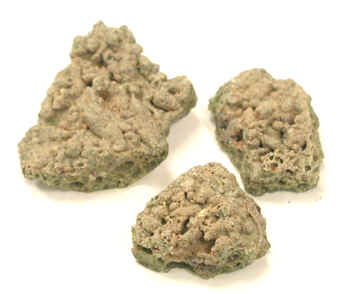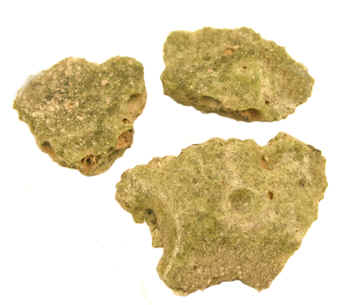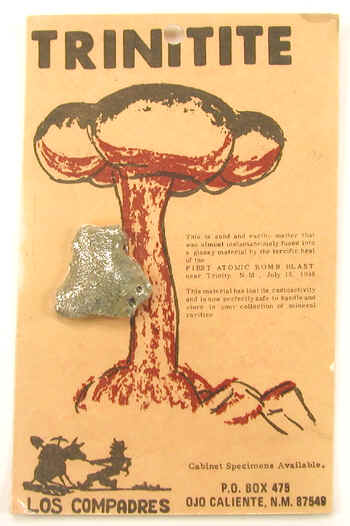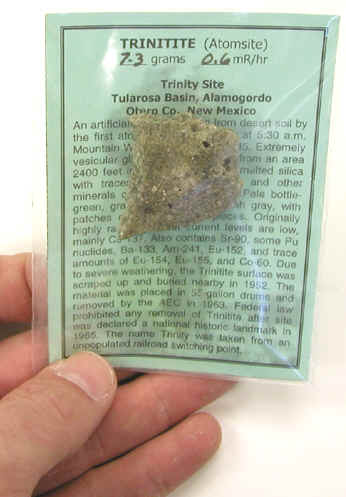Trinitite
Trinitite is the name given to the soil that was fused into a glass-like consistency by the heat from the Trinity Test, the world’s first nuclear explosion that took place July 16, 1945 at Alamogordo New Mexico. As can be seen from the photographs, Trinitite typically has a grayish-green color. Individual pieces are usually 1 cm thick and several grams in weight. As a rule, one surface is smooth (photograph on right) while the other side has a highly irregular texture (photograph on left). The three pieces shown in the photograph range from 1 to 1.5 inches across.


By the early 1950s, the government had excavated and buried almost all of the Trinitite remaining at the site. The subsequent removal of material was strictly prohibited. Prior to this however, a fair amount had made it into the hands of the public and rock collectors.


Trinitite is measurably radioactive, but not dangerously so. Needless to say, the activity depends on a variety of factors, e.g., the size of the piece and the distance from ground zero. The three pieces shown are approximately 1 uR/hr above background at a distance of one inch.
As the radionuclides created by the explosion decay away, Trinitite becomes less and less radioactive. Which radionuclides are identified today depends on how much trouble and time one is willing to devote to the analysis. A simple analysis by gamma spectroscopy reveals the presence of Cs-137, Am-241, Ba-133, Co-60, Eu-152, Eu-154 and Eu-155 (the Co-60 and Eu-155 were present at very low levels but they were still detectable as of March 2005). A number of harder to detect pure alpha and beta radionuclides will also be present, e.g., Sr-90, Pu-239 and Pu-241. Needless to say, naturally occurring nuclides such as K-40 and the various members of the uranium and thorium decay series are also present.
Donated by Jim Berger, Los Alamos National Laboratory and Bill Kolb.
Reference
Kolb, W.M., and Carlock, P.G. Trinitite, The Atomic Age Mineral (1999)
